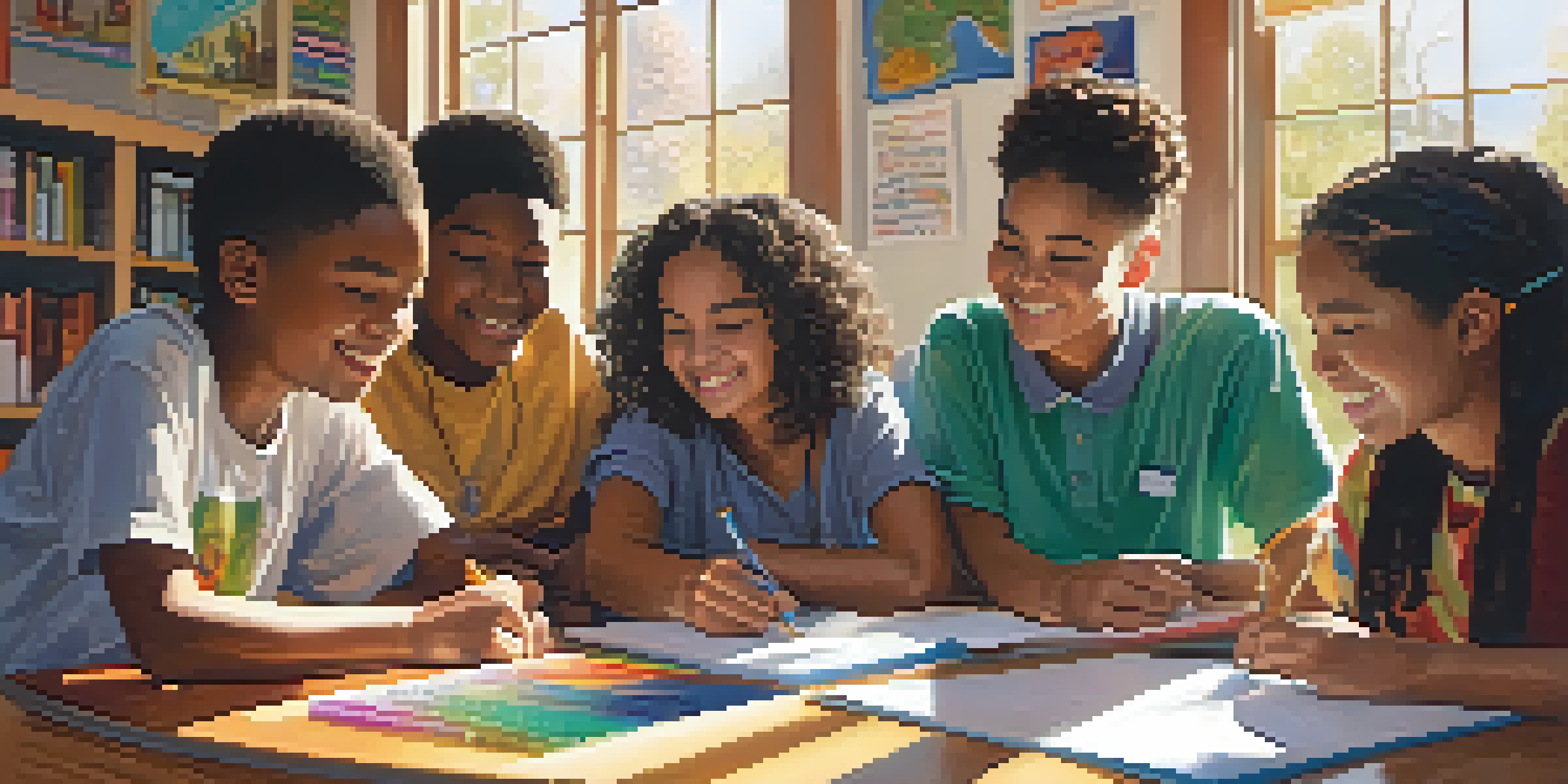Understanding Intercultural Competence in Global Classrooms

What is Intercultural Competence and Why It Matters
Intercultural competence refers to the ability to communicate and interact effectively with people from different cultures. In our increasingly globalized world, this skill is more important than ever, especially in classrooms that bring together students from diverse backgrounds. It promotes understanding, respect, and collaboration, which are vital for both personal and academic growth.
In a multicultural society, it is important to cultivate intercultural competence to navigate the complexities of cultural differences.
Imagine a classroom where students can share their unique perspectives and learn from each other’s experiences. This environment not only enriches the learning experience but also prepares students for a multicultural workforce. By fostering intercultural competence, educators can create an inclusive atmosphere that values diversity as a strength.
Ultimately, intercultural competence is about bridging gaps and building connections. When students learn to appreciate and navigate cultural differences, they become more empathetic individuals who can contribute positively to society. This is crucial in a world where cultural misunderstandings can easily lead to conflict.
The Role of Teachers in Developing Intercultural Skills
Teachers play a pivotal role in nurturing intercultural competence within their classrooms. They set the tone for openness and inclusivity, encouraging students to express their views and share their cultural backgrounds. By modeling respectful communication and curiosity, teachers inspire students to engage with one another meaningfully.

One effective way for teachers to promote intercultural understanding is through curriculum design. Incorporating diverse perspectives in lesson plans not only enriches the material but also allows students to see the world through different lenses. For example, discussing literature from various cultures can spark conversations about values, beliefs, and traditions.
Intercultural Competence Defined
Intercultural competence is the ability to communicate effectively with individuals from diverse cultures, fostering understanding and collaboration.
Additionally, teachers can facilitate activities that promote collaboration among students from varied backgrounds. Group projects, cultural presentations, and discussions about global issues can help students develop trust and learn from each other’s experiences. This collaborative learning environment fosters stronger intercultural relationships.
Challenges to Achieving Intercultural Competence
Despite the benefits, there are challenges to achieving intercultural competence in global classrooms. Stereotypes and prejudice can hinder open communication, making it difficult for students to connect. When students come with preconceived notions about each other’s cultures, it can create barriers instead of bridges.
Diversity is the one true thing we all have in common. Celebrate it every day.
Another challenge is language differences. In a classroom where English is not the first language for everyone, misunderstandings can arise. This can discourage students from participating fully in discussions, leading to isolation and missed learning opportunities.
Lastly, the lack of awareness or training among educators can also impede progress. If teachers are not equipped with the necessary skills and knowledge to address cultural differences, they may unintentionally perpetuate biases. Ongoing professional development and cultural training can help teachers navigate these challenges.
Strategies for Building Intercultural Competence
Building intercultural competence requires intentional strategies that engage students actively. One effective approach is to incorporate experiential learning, where students participate in cultural exchange programs or collaborative projects with peers from different backgrounds. This hands-on experience fosters genuine understanding and respect.
Another strategy is to create a culturally responsive curriculum that reflects diverse voices and perspectives. This not only validates students' identities but also encourages them to explore their own cultural heritage. By celebrating differences and similarities, students learn to appreciate the richness of diversity.
Teachers Foster Cultural Skills
Educators play a crucial role in developing students' intercultural competence by promoting inclusivity and facilitating meaningful cultural exchanges.
Lastly, promoting open dialogue in the classroom is essential. Encouraging students to share their thoughts and experiences can create a safe space for discussion. This openness helps dismantle stereotypes and fosters deeper connections between students as they explore each other’s cultures.
The Impact of Technology on Intercultural Learning
Technology has revolutionized the way we connect and learn about different cultures. Online platforms enable students to communicate with peers from around the world, providing opportunities for cultural exchange beyond the classroom walls. This virtual interaction can enhance students' intercultural competence significantly.
For instance, participating in global classroom projects or video conferences with students from other countries allows learners to engage in real-time discussions. These experiences help students understand diverse perspectives and develop a global mindset. Technology thus serves as a powerful tool for fostering intercultural relationships.
Moreover, educational resources available online, such as documentaries, articles, and interactive courses, can broaden students' awareness of global issues. By utilizing these resources, educators can create a more informed and culturally aware student body. Technology, when used thoughtfully, can greatly enhance intercultural learning.
Measuring Intercultural Competence in Students
Measuring intercultural competence can be challenging, but it is essential for assessing progress. Educators can utilize surveys and self-assessments to gauge students' understanding of cultural differences and their ability to communicate effectively. This reflection encourages students to think critically about their experiences and interactions.
Another effective method is through observation during group activities and discussions. Teachers can assess how students engage with one another, demonstrating respect, and openness. These observations can provide valuable insights into students' intercultural skills and areas for improvement.
Technology Enhances Learning
The use of technology in education provides students with opportunities for global interaction, significantly enhancing their intercultural understanding.
Lastly, incorporating feedback from students about their learning experiences can help educators refine their approaches. Creating a culture of continuous improvement ensures that intercultural competence remains a priority in the classroom. This ongoing assessment not only benefits students but also enhances the overall educational environment.
The Future of Intercultural Competence in Education
As the world continues to grow more interconnected, the importance of intercultural competence in education will only increase. Future generations will need to navigate a complex global landscape, making it essential for them to skills that enable effective communication across cultures. Educational institutions must prioritize this competency to prepare students for success.
Innovative teaching methods and curricula that emphasize intercultural understanding will play a critical role in this evolution. By integrating experiential learning, technology, and authentic assessments, schools can create environments where students thrive. This proactive approach ensures that students are not only academically prepared but also culturally competent.

In conclusion, the journey towards intercultural competence is ongoing and requires dedication from educators, students, and communities alike. By championing diversity and fostering understanding in global classrooms, we can cultivate a generation that values inclusivity and collaboration, ultimately contributing to a more harmonious world.